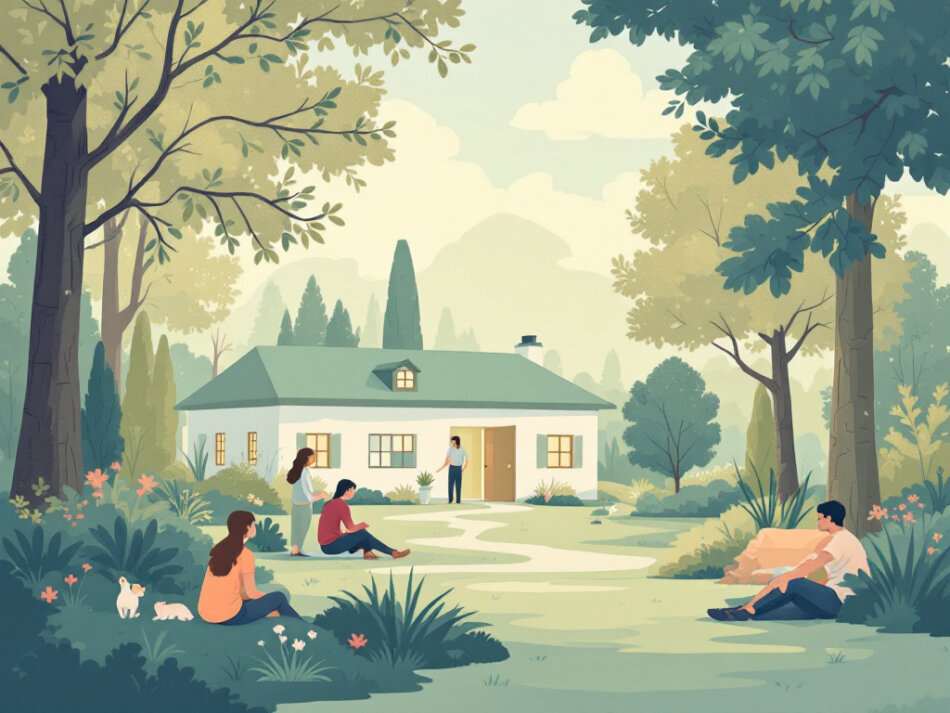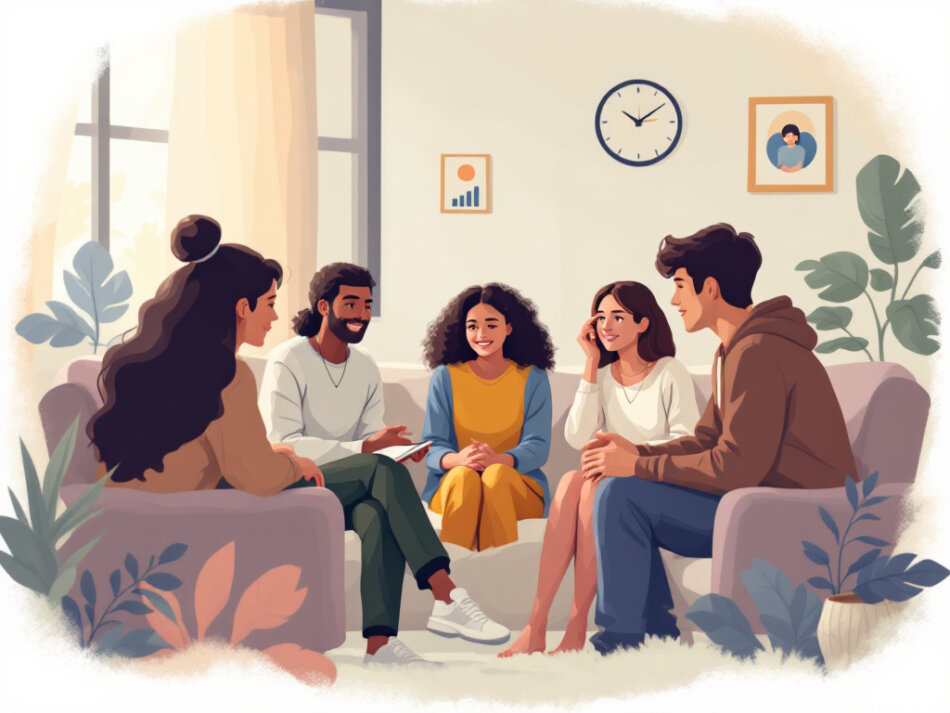Understand day treatment basics
Day treatment for traumatized teens offers a structured, therapeutic care setting where your teen can receive intensive support during the day and return home in the evenings. This model, also known as a Partial Hospitalization Program (PHP), bridges the gap between weekly outpatient therapy and full inpatient hospitalization. By enrolling your teen in day treatment, you’re ensuring they get focused trauma‐informed care while maintaining connections with family and school.
What is day treatment
In a day treatment program, adolescents typically participate in therapy sessions five days a week, with each day lasting four to eight hours. During this time, they engage in:
- Individual therapy
- Group therapy
- Academic support or tutoring
- Skill‐building workshops
- Expressive arts activities
This schedule helps teens practice coping strategies in real‐world settings each evening, reinforcing progress made during the day.
Who benefits
Day treatment can be ideal if your teen:
- Experiences moderate to severe trauma symptoms but is stable enough to live at home
- Shows signs of anxiety, depression, flashbacks or emotional dysregulation
- Requires more support than weekly therapy but does not need 24/7 medical monitoring
If you’ve explored options like residential therapy for traumatized teens or outpatient counseling, day treatment may offer the right balance of intensity and family involvement.
Program structure
A typical day treatment schedule includes:
- Morning check-in and mindfulness practice
- Trauma-focused group therapy
- Lunch and social skills workshops
- Afternoon individual or family therapy
- Expressive arts or recreational activity
Many programs integrate trauma-informed approaches to create a safe, predictable environment where your teen can build trust and learn emotional regulation skills.
Recognize trauma symptoms
Trauma can affect your teen’s behavior, emotions and physical health. Recognizing these signs early helps you advocate for the appropriate level of care.
Behavioral signs
- Withdrawal from friends and family
- Avoidance of situations that trigger memories
- Outbursts of anger or aggression
- Risky behaviors or self-harm
Emotional signs
- Intense anxiety or panic attacks
- Persistent sadness or depression
- Frequent nightmares or flashbacks [1]
- Guilt, shame or self-blame
Physical symptoms
- Sleep disturbances or insomnia
- Headaches, stomachaches or other unexplained pain
- Changes in appetite or sudden weight loss
If your teen exhibits several of these symptoms, a day treatment program can address the root causes of their distress through evidence-based therapies.
Explore therapy modalities
Day treatment programs employ multiple therapeutic approaches to help your teen process trauma, regain stability and develop healthy coping methods.
Cognitive behavioral approaches
Cognitive Behavioral Therapy (CBT) teaches teens to identify and challenge unhelpful thought patterns that fuel anxiety, depression and post-traumatic stress. A specialized form, Trauma-Focused CBT (TF-CBT), guides adolescents through:
- Recognizing false beliefs about the trauma
- Learning coping strategies for distressing memories
- Involving caregivers in treatment to reinforce progress at home
TF-CBT has proven effective for teens who have experienced abuse or loss [2].
For broader PTSD support, you might also explore ptsd therapy for teenagers or trauma-focused treatment for teens.
Dialectical behavior therapy
Dialectical Behavior Therapy (DBT) focuses on emotion regulation, distress tolerance, interpersonal effectiveness and mindfulness. In a day treatment setting, your teen can:
- Practice DBT skills in group exercises
- Receive real-time coaching on emotional responses
- Attend mindfulness sessions to ground themselves
Many programs include DBT as a core component, alongside other evidence-based treatments [3]. DBT can complement teen trauma and emotional regulation therapy to reduce self-harm and impulsive behaviors.
EMDR and trauma processing
Eye Movement Desensitization and Reprocessing (EMDR) helps teens reprocess traumatic memories by:
- Guiding them to recall distressing events
- Using bilateral stimulation to reduce memory intensity
- Teaching grounding techniques to manage emotional arousal
If EMDR is a key part of your teen’s plan, look into a dedicated teen emdr therapy program that accepts insurance and integrates family support.
Expressive arts therapy
Creative therapies—such as art, music or drama—allow teens to express feelings they may not yet have words for. Programs like Imperial Healing House offer expressive arts alongside CBT and DBT, combining therapeutic care with academic support each day [4].
Typical expressive arts activities include:
- Drawing or painting to process emotions
- Music or movement sessions for bodily awareness
- Journaling or poetry for self-reflection
Emerging trauma formats
Brief Intensive Trauma Treatment (BITT) is being evaluated in a multicenter trial for adolescents with PTSD. BITT compresses trauma-focused CBT and EMDR into a one-week program, potentially reducing dropout rates and accelerating healing [5]. While still under study, BITT represents an innovative, intensive option you might encounter.
Evaluate family involvement
Family engagement is critical in helping your teen integrate new skills and maintain gains after day treatment.
Family systems therapy
Family Systems Therapy addresses communication patterns and trust issues within the household. In day treatment, your family can:
- Attend weekly family therapy sessions
- Learn to set healthy boundaries and routines
- Rebuild trust after conflict or separation
Programs like those at Imperial Healing House and the Massachusetts Center for Adolescent Wellness emphasize family work to support long-term recovery [6].
Caregiver education
To reinforce therapy at home, you’ll receive:
- Psychoeducation on trauma and its effects
- Strategies for managing crises and de-escalating conflict
- Regular updates on your teen’s progress and treatment plan
By partnering with clinicians, you create a stable, supportive environment that extends healing beyond program hours.
Navigate insurance coverage
Many day treatment programs accept major insurance plans, but you’ll need to verify your teen’s benefits and understand out-of-pocket costs.
Check accepted insurers
Contact each program’s admissions team to confirm they accept your insurance. Look for phrases like “we bill in-network” or “we accept Medicaid/Medicare.” You can also explore trauma therapy that accepts insurance or trauma recovery program that accepts insurance for additional listings.
Understand out-of-pocket costs
Review your policy to identify:
- Deductibles
- Copays per session or day
- Out-of-pocket maximums
Ask about any additional fees for academic support or recreational activities.
Use billing advocates
If navigating benefits feels overwhelming, consider:
- Working with a program’s financial counselor
- Hiring an independent insurance advocate
- Seeking guidance from your state’s insurance commission
An advocate can help you appeal claim denials or locate programs within your network.
Compare treatment alternatives
While day treatment offers a balanced approach, it’s useful to compare other care levels to decide what’s best for your teen.
Day vs residential care
| Feature | Day treatment | Residential care |
|---|---|---|
| Daily schedule | 4–8 hours therapy, home overnight | 24/7 care on a campus |
| Family involvement | High, evenings at home | Moderate, scheduled visits |
| School continuity | Possible with tutoring or online classes | On-site schooling or pause in school |
| Intensity | Intermediate | High |
| Cost | Lower than residential | Higher due to room and board |
Residential care may be necessary if your teen poses a safety risk or needs round-the-clock medical supervision, while day treatment works well for those needing structure without full lockdown.
IOP vs day treatment
An Intensive Outpatient Program (IOP) typically involves 3–5 sessions per week, each lasting 2–4 hours. Day treatment exceeds IOP in both hours and therapeutic modalities, making it a stronger option when:
- Weekly therapy isn’t enough to manage symptoms
- Your teen needs more group work and daily skill practice
Some providers offer step-down models, transitioning teens from residential care to day treatment then to IOP as they stabilize [7].
Plan next steps
Once you decide day treatment fits your teen’s needs, you’ll want to move forward confidently.
Identify programs near you
- Ask your teen’s current therapist for referrals
- Search online directories for “day treatment for traumatized teens”
- Contact local hospitals or community mental health centers
Check each program’s website for curriculum details, staff credentials and insurance information.
Prepare for evaluation
Most programs require:
- A clinical assessment by a psychiatrist or psychologist
- Medical records and medication lists
- School reports or teacher input
Gather these documents in advance to streamline the intake process.
Engage your teen
Talk with your teen about:
- What to expect each day
- Goals for therapy, such as reducing flashbacks or improving relationships
- How they can stay in touch with friends and family
Encourage them to ask questions and express any concerns before starting.
Conclusion
Choosing day treatment for traumatized teens can be a powerful step toward healing. By understanding program structure, therapy options, family roles and insurance logistics, you’ll be well-prepared to support your teen on their recovery journey. With the right day treatment program, your family can build resilience, practice coping skills in daily life and move toward lasting emotional well-being.











